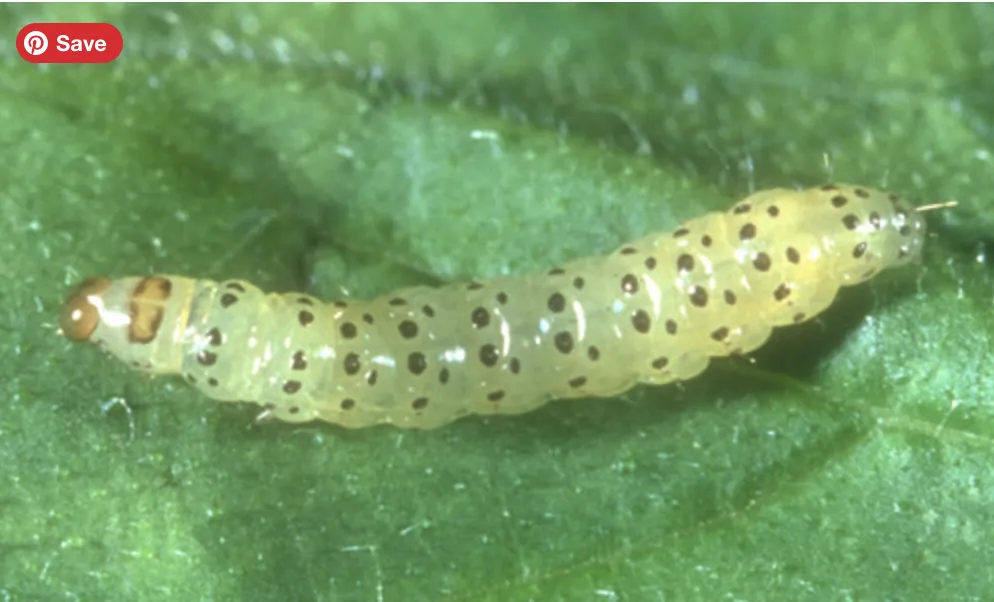

Is that a Worm in my Pickle?

Young pickleworm larva, Diaphania nitidalis (Stoll). Photograph by John L. Capinera, University of Florida.
I just got some new soil that had curcubits growing in it and I realized as I was placing it in my beds, there were a lot of caterpillars. Then this morning I got an article in my email about pickleworms and i'm pretty sure my soil is loaded with them. Now at least I know to be ready and you can too!
Well I can't speak for your pickle specifically, but if you have seen small holes in your cantaloupe, cucumbers, watermelons, or squash? If so, you might have an infestation of pickleworms. A late-season pest that can affect all cucurbit crops is pickleworms. They are the caterpillar of a little moth, which has yellow wings with brown edges as an adult. The female moth will only deposit eggs on the buds and blossoms of your plants during the night when she is most active. These eggs will hatch into larvae in just four days, and the larvae will burrow into the developing fruit, leaving behind a gummy mess or excrement on the fruit's surface. These larvae have black patches on a light background, although their color can vary based on the food they consume. The larvae will pupate and resume their life cycle after around fourteen days.
The pickleworm causes damage to more than just the tiny tunnel holes in the fruit; it can also cause early ripening and rotting, as well as the creation of inedible portions. Scouting your crops for these bothersome pickleworms starting in late July is essential to preventing your hard work from being destroyed. When conducting your scouting, make sure to actively search for eggs and larvae on the exterior as well as inside of flower buds and leaves. By using this technique, you may make more informed decisions about when to start implementing control measures to lessen crop loss.
There are ways to prevent or get rid of pickleworms in your garden. Using a floating row cover to cover the plants at night will stop adult female moths from laying eggs on the plants is one method of cultural control you can use. Should you decide to choose this path, it is crucial to ensure that the cover is taken off as soon as possible in the morning to allow pollinators to reach the blooms. Planting earlier has also been demonstrated to lower the incidence of pickleworm infection. We can usually lower the pest pressure if planting takes place before pickleworms become an issue. Insecticides are another tool you may use to manage pests in your garden. To effectively control pickleworm populations, the insecticide must be sprayed on the plant's foliage prior to egg hatching. This will expose and kill the larvae before they have a chance to tunnel into the blooms and fruit. Pyrethroids are the greatest insecticide now on the market for controlling pickleworms in homes. You may get them in many well-known insect control products at garden supply stores.
Your diverse squash and melon crops may not yield a satisfactory harvest because of the enigmatic pickleworm. But like many other garden pests, once you understand how this bothersome pest reproduces, crop success and avoidance will follow. For inquiries about additional garden pests or if you suspect you may have a pickleworm problem, call the local Hart County Extension Office at 706-376-3134.
Article reproduced form original created by Sierra Burke

